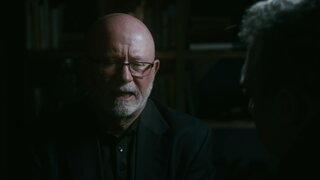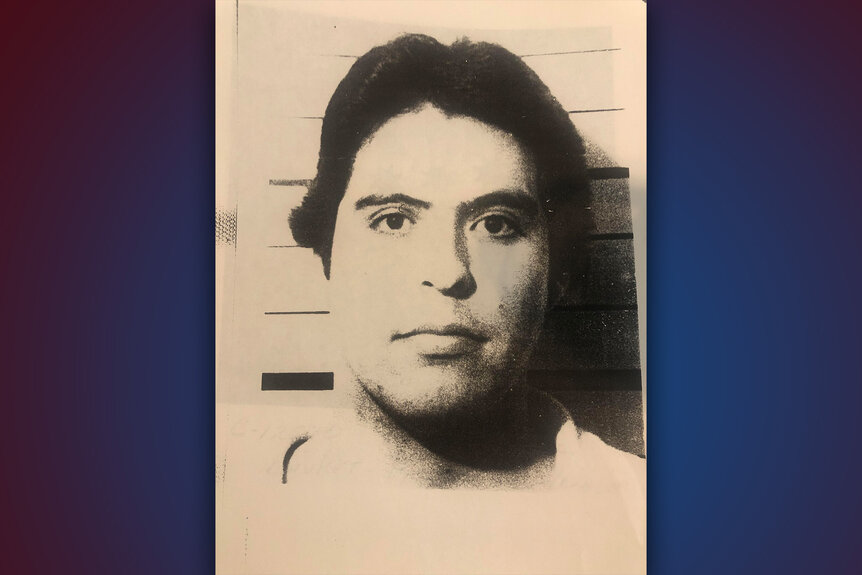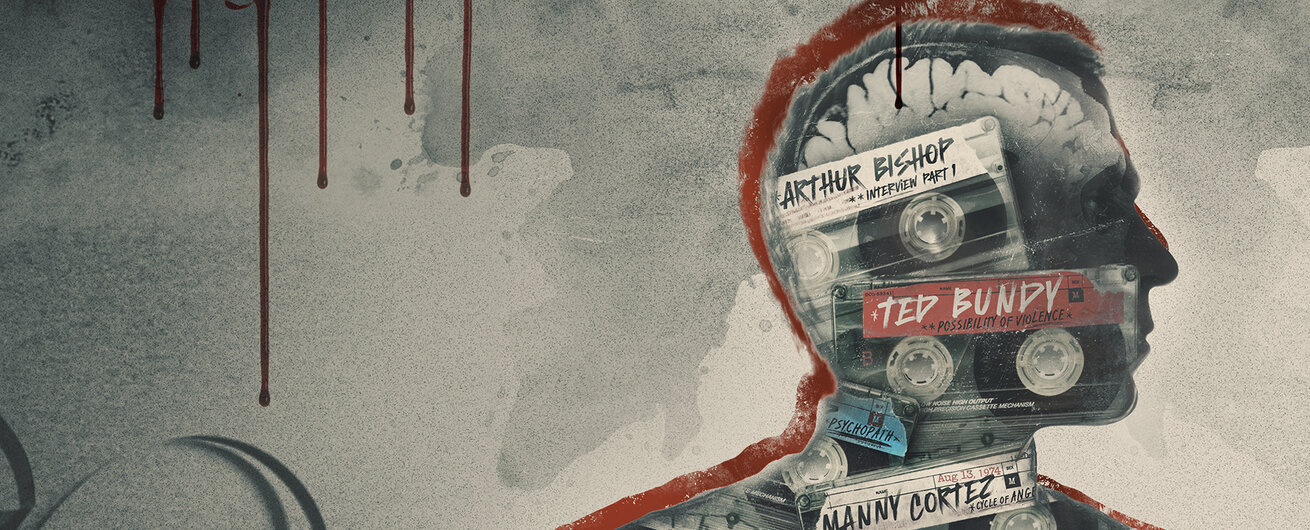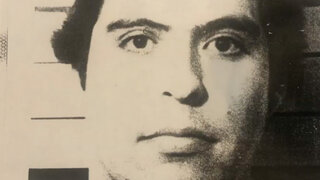Create a free profile to get unlimited access to exclusive videos, breaking news, sweepstakes, and more!
A Convicted Killer Tells Psychologist He Murdered More Victims Than Previously Thought
Manny Cortez was convicted of killing two 11-year-old friends, but recordings of his sessions with Dr. Al Carlisle suggest the California native could have even more victims.
For more than four decades, Manny Cortez has been behind bars at the Oregon State Penitentiary for the brutal murders of two 11-year-old girls, but could he be responsible for more killings?
Oxygen’s Violent Minds: Killers on Tape features never-before-heard recordings from Cortez, who suggests that he took other lives in conversations with Dr. Al Carlisle, an acclaimed psychologist who devoted his life to understanding the development of the violent mind.
Cortez has only been convicted of the homicides of 11-year-olds Rachel Isser and Deanna Jackman, who vanished on their way to play tennis in December of 1979 in Ashland, Oregon. Isser’s body was found later that day in the press box of a university stadium, while Jackman’s body was later found at a nearby quarry.
Cortez has never been charged with any other murders, but Eugene Police Det. Les Rainey believes it’s possible he could be linked to “at least 10 to 12 other murders.”
“I”ve spent many hours and studied thousands of pages of transcripts and letters and he’s revealed, over the years, you know, some details of some of those cases,” Rainey said in the series.
Cortez told Carlisle the first time he “went all the way” with a crime was in April of 1977 after he broke up with his high school girlfriend Cindy. Cortez had been 17 years old when he started dating 15-year-old Cindy, who he quickly became “obsessed” with.
“When I realized she really took a liking to me, it fed my ego,” he said in the recordings. “She was so much my identity. But, um, what I was, with Cindy that was always false.”
Cortez was hiding a much darker side to his personality. He spent much of his childhood fantasizing about the graphic violence and torture of women described in Peter Saxon’s fictional book The Torturer, getting sexual pleasure from the sadistic scenes he read in the novel.
But Cortez was unable to hide his true nature from Cindy indefinitely and eventually the relationship fell apart.
“My rage was so intense that I was ready to kill Cindy in that rage,” Cortez recalled in the tapes.
He even went as far as to try to lure Cindy to a vocational auto shop where he worked at the time to try to take her life in an attempt to restore the “control” he felt she had taken from him.
“I was going to beat her to death,” he told Carlisle. “I was going to string her up from the doorway and I intended to whip her to death. I intended to make her die hard.”
The plan would fall apart, however, when Cindy decided to bring a friend with her to the site, unknowingly sparing her life.
“I didn’t go through with it. But at the same time, there was this rage inside of me,” Cortez said.
An unhinged Cortez began “trolling” the streets looking for a surrogate victim.
“April of ‘77 is when Cindy and I split up. That would also correspond with the first time that I actually went out and went all the way with the crime,” he said, referring to the death as “accidental.”
RELATED: Killer Describes Why He Tortured And Killed Innocent Strangers During Utah's Hi-Fi Murders
Cortez admitted that during his crimes he was often ruled by “sadism” and a need to terrify, hurt and degrade his victims.
“If your victim reacts the way you expect them to react the way they did in your fantasies, the natural response is going to be arousal, and this gal didn’t,” he told Carlisle.
According to Rainey, the victim had been whipped so viciously she died prematurely — could this murder have aligned with statements made by Cortez about another crine?
“I was enraged that the person died. Why? Because that person was no longer there to fulfill my fantasy,” he told Carlisle. “All I know is, this whore has denied me. I was in such a rage that I just did every sadistically brutal thing I ever read, to a corpse. It was as if I was trying to beat the person back to life.”
Cortez described the killing as “unfulfilling.”
He was careful not to provide Carlisle with any names, but Rainey suspected Cortez could be linked to the unsolved homicide of 26-year-old Rosa Williams, a woman who lived just four houses from the Cortez home and had also been a client at the vocational center where he worked.
Her nude remains were found on an East Los Angeles street on April 8, 1977.
“There’s indications of bindings on her wrists and ankles. The severe whip marks. She had been burned pretty extensively on different surfaces of her body,” Rainey said. “It was difficult for even veteran detectives to look at that and not cringe and think that this had to be one of the most egregious cases that they had encountered.”
Investigators were never able to solve the case. Around this time, Cortez seemed to imply in his conversations with Carlisle that he had gotten away with his first kill too.
“There was a real fear that the police would come knocking at my door. But I heard somewhere that if police don’t solve a murder within 24 or 48 hours they usually won’t,” he said. “So within 48 hours, I felt pretty safe.”
Months later, on December 6, 1977, Cortez told Carlisle he abducted a teenager named Yolanda after offering her a ride at a bus stop and then driving to a middle school parking lot.
“Right there in the parking lot, I thrust her head down, she’s screaming and yelling and I put a knife to her and told her I’d kill her if she didn't shut up and tied her hands behind her back, gagged her,” he said, according to the recording.
After she was tied up, Cortez drove to his home but he realized his brother and sisters were still at the residence. He instructed Yolanda to wait in the car while he went into the house, but the terrified teen realized it could be her only opportunity to escape and managed to get out of the car and run to a nearby neighbor.
Before police could arrive, Cortez “nonchalantly” got into his car and drove away. He went to his workplace where he allegedly confessed to a girl he knew that he had kidnapped someone, took $300 from her and convinced her to trade cars with him.
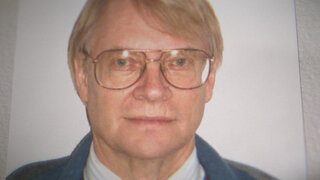
When police pulled his vehicle over a short time later, they found his friend instead. Cortez told Carlisle the ruse gave him enough time to hop onto a bus headed to Oregon.
For about six months, he lived with a cousin in Eugene, but even the close call with police hadn’t quieted the “beast” inside him. If anything, Cortez told Carlisle it made it “worse.”
“The overpowering urge to kill pitted against the hate he has developed for himself results in the deterioration in the consistency of his emotions and behavior,” Carlisle would later write. “It becomes more difficult for him to continue to kill as singularly and intense as he has done in the past, he becomes sloppier in his criminal activities, almost as if he is trying to get caught.”
Rainey believes Cortez could also be linked to the 1978 homicide of Karen Whiteside in Eugene.
Whiteside was found outside the front steps of a portable classroom at Fairfield Elementary School — a school where Rainey said Cortez had been known to hit tennis balls off an exterior wall — on the morning of March 22, 1978.
“Her pants had been pulled down and pulled off one leg. She had one limb bound with a garment to the wood bannister,” Rainey said of the 16-year-old.
Whiteside disappeared earlier that day as she was walking by the school on her way to a friend’s house.
Although never mentioning the crime directly, Carlisle and Cortez did talk about another crime where he had used “flattery” to gain a young girl’s trust and found that she “broke a pattern” of being compliant.
“This girl fought like a badger,” he said of the unknown victim. “I mean, she just completely surprised me.”
Rainey, who was just a patrol officer at the time of the homicide, would later request to be assigned to the unsolved case in 1991 and found a report from a state trooper in the file that suggested Cortez may have been involved, noting “striking correlations” between the Ashland murders and Whiteside’s death.
“The three victims had been asphyxiated. They had been killed on, or, in close proximity to schools,” Rainey said. “They were young females. It’s not evidence, it’s not enough to charge him with, but certainly, you know, more reason to look closely at Manny Cortez.”
The next year, in 1992, Rainey went to the prison to speak to Cortez and asked what he should tell Whiteside’s family. Cortez never directly admitted his involvement but did provide Rainey with the closure he needed. "He sighed and he said, 'You can tell them, her killer is in prison and will die there,’” Rainey recalled.
Carlisle died in 2018 at the age of 81, but his family provided the recordings to police in Los Angeles and Oregon last year, sparking renewed interest in the Whiteside and Williams’ homicides.
Cortez has not been charged with any other crimes and remains behind bars where he’s serving a 50-year sentence for Isser and Jackman’s deaths.
